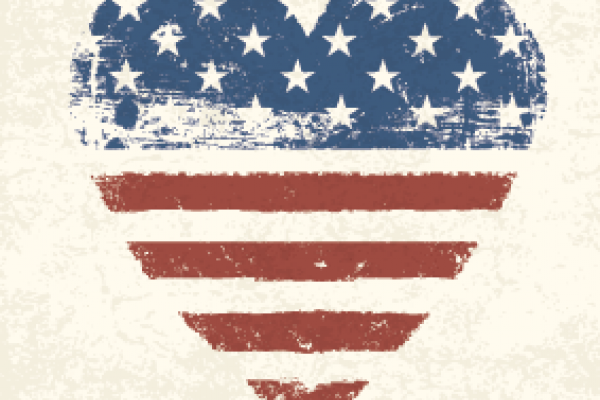The International Day of Peace was recently observed on Sept. 21. Among other things, this annual commemoration is dedicated to the promotion of world peace, and more specifically, the elimination of killing violence across the globe. The day was first celebrated in 1982 and is currently recognized by an assortment of nation states, political groups, and various individuals of diverse ideological and religious persuasions.
In honor of the recently remembered International Day of Peace, one proposal worth exploring is the implementation of a U.S. Department of Peace and Nonviolence into the U.S. federal budget.
In February of 2009 the U.S. House of Representatives heard H.R. 808 (first introduced in July of 2001, just months before the Twin Towers fell in New York on September 11) to create a cabinet-level Department of Peace and Nonviolence that embodies a broad approach to peaceful, nonviolent conflict resolution at both domestic and international levels. Among other things, the Department of Peace and Nonviolence would serve to promote nonviolence as an organizing principle of life, and help to create the conditions for a more peaceful world. In light of our continued national discernment in response to the use of chemical weapons in Syria, and in the broader context of violent conflict in various regions around the world, such a department would be valuable for the advancement of peace in future generations.
The following are some highlights from the proposed legislation:
- Establish a cabinet-level department in the executive branch of the federal government, headed by a secretary of Peace and Nonviolence, appointed by the president with the advice and consent of the Senate.
- The Department of Peace and Nonviolence would be dedicated to peacemaking and the study of conditions that are conducive to both domestic and international peace.
- The mission of the Department of Peace and Nonviolence shall be: to hold peace as an organizing principle of life; endeavor to promote justice and the expansion of human rights; strengthen non-military means of peacemaking; promote the development of human potential; work to create peace, prevent violence, divert from armed conflict and develop new structures in nonviolent dispute resolution; and take a proactive, strategic approach in the development of policies that promote national and international conflict prevention, nonviolent intervention, mediation, peaceful resolution of conflict and structured mediation of conflict.
- The department will create and establish a Peace Academy, modeled after the military service academies, which will provide a 4-year concentration in peace education. Graduates will be required to serve five years in public service through programs dedicated to domestic or international nonviolent conflict resolution.
While the specifics of H.R. 808 require detailed analysis and sustained input from U.S. citizens, one would like to believe that the core idea of a Department of Peace and Nonviolence would receive significant bipartisan support, especially among military veterans with firsthand experience of warfare. However, the U.S. has resisted this peacemaking policy for generations. Even as far back as 1792, a signer of the Declaration of Independence, Benjamin Rush, along with Benjamin Banneker, suggested the blueprint for an Office of Peace (intended to counter what was then known as the Department of War). President George Washington stated that his first wish was “to see this plague of mankind, war, banished from the earth,” yet legislation for a Department of Peace was not introduced until 1935, which, by 1969 wasfollowed by 90 additional bills. And so, while many U.S. citizens state a longing for peace and nonviolence, we seem to lack the political will and public motivation to make it a reality, and the result is a continued state of destruction.
For example:
- According to Milton Leitenberg in “Deaths in Wars and Conflicts in the 20th Century:" During the past century, the U.S. fielded soldiers in battle during 64 years of those years, and 231 million people died as a direct result of war and conflict — most of whom were civilians.
- The United States currently ranks 99th out of 162 in the Global Peace Index of peaceful nations.
- According to the U.S. Center for Disease Control, homicide is the second leading cause of death for U.S. citizens between the ages of 15-24.
- According to the International Centre for Prison Studies, the U.S. has the highest incarceration rate in the world — greater than Iran, Iraq, and China combined.
The culture of violence in our nation – as well as across the world – is unacceptable, and while the total removal of human brutality is unimaginable for most, we recognize that the reduction of violence anywhere will do something for the reduction of violence everywhere. The time is upon us to recognize that peace is not merely a destination, but a journey, and not merely a noun, but a verb, for we can be people of peace even in the midst of a violent world. Instead of spending billions of dollars each year only defending ourselves from our neighbors, perhaps it is time to invest more fully in methods of making peace alongside our neighbors. It may all be a lofty dream, but for the world to truly be as one, we must be willing to give peace a chance, and the Department of Peace and Nonviolence may be a step in the right direction.
Brian E. Konkol is an ordained pastor of the Evangelical Lutheran Church in America (ELCA), and serves as Chaplain of the College at Gustavus Adolphus College in St. Peter, Minn.
Image: Heart-shaped American flag, pashabo / Shutterstock.com
Got something to say about what you're reading? We value your feedback!
